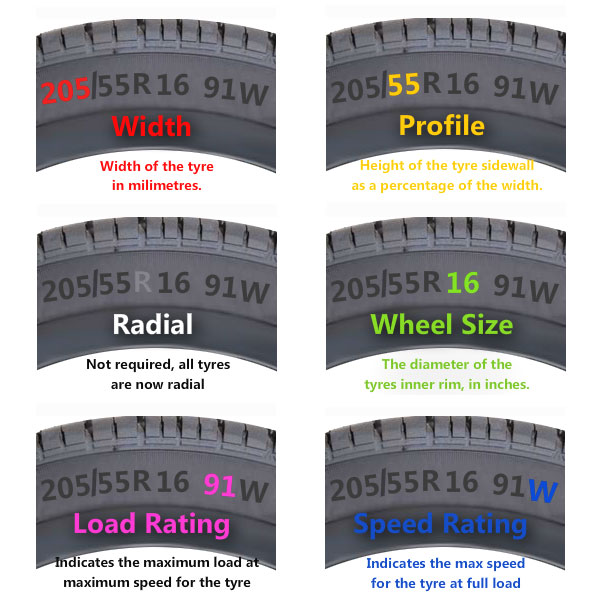

Should Drivers Replace Old Tires Even if Their Treads Aren't Worn Out?
While most drivers' past experience might not indicate it's necessary, the growing realization that tires are perishable means tires on some vehicles will possibly age out before they wear out. Composed of steel belts, fabric plies and rubber compounds, the structural integrity of tires can degrade over an extended period of time as the result of chemical reaction within the rubber components, cyclic fatigue, abuse and road hazards.
Tire aging isn't typically an issue with vehicles driven frequently. However, the lower annual mileages put on sporadically used motor homes, enthusiast vehicles driven for pleasure and collector cars trailered to events could make tire calendar age an important consideration. Tire age is also a concern for the often unused spare tire in a car's trunk, suspended under a pickup's cargo bed or hung off the back of an SUV.
Unfortunately no one is absolutely sure of how long tires will last because of the many variables. Heavily loaded tires on vehicles stored outdoors in sunny, scorching hot climates and only driven occasionally face some of the most severe service conditions and potentially have the shortest calendar lifespan. In contrast, lightly loaded tires on vehicles parked in garages and driven daily in moderate climates experience some of the least severe service conditions and potentially have the longest lifespan.
Then there is the influence of how well drivers maintain their tires (regular cleaning and pressure checks along with periodic rotations and wheel alignments), use and/or abuse them (drive on them when overloaded or underinflated), as well as the possibility of irreversible damage from punctures, cuts and impacts with potholes, curbs and other road hazards. A tire's original durability will be permanently compromised if it is uncared for, abused or damaged.
Therefore every tire's life expectancy ultimately depends on the environment in which it operates and its individual service conditions. The difficult task remains how to attempt to quantify tire life based on calendar age. Arbitrarily replacing tires prematurely based simply on age may result in tires being discarded before their time, contributing to increased operating costs, as well as waste disposal and recycling concerns.
Since Tire Rack sells tires manufactured in North and South America, as well as Europe, Africa and Asia, it's common for us to receive new tires directly from manufacturers that are already six to nine months old. Since we rotate our inventory, most of the tires we ship are less than a year old.
However some low volume tires in sizes for limited production vehicles can only be efficiently manufactured periodically where one short production run may produce more than a year's worth of global supply. In some of these cases, Tire Rack might receive new tires directly from the manufacturer that are already several years old.
There are also some occasions where we work with a tire manufacturer to help them clear out their inventory when they discontinue a tire line. While this may uncover some new tires that are several years old, these clearance tires are typically offered at a discount and will wear out before they age out.
Tires are stocked in Tire Rack distribution centers under favorable storage conditions. Protected from exposure to direct sunlight, moisture and hot and cold temperature extremes, our inventory leads a sheltered life compared to the tires mounted on wheels, installed on vehicles and exposed to the elements, road grime and brake dust.
Tire manufacturer's replacement tire warranties begin when the tires are purchased and typically last 4 to 6 years from that date. This allows the tire manufacturers' limited warranty to accommodate the time it takes tires to be shipped from the manufacturing plant to the warehouse or distribution center, to the retailer and to the consumer, as well as the time they spend in-service on the vehicle.
Keeping tires properly inflated is probably the most significant action a driver can take to prevent tire failure. For example, driving a vehicle with a significantly underinflated tire can permanently damage the tire's internal structure in ways invisible to external visual inspections. A U.S. National Highway Traffic Safety Administration (NHTSA) tire aging field study revealed that 30 percent of spare tires observed were significantly underinflated when first checked, Putting underinflated spare tires into service before being properly inflated would greatly increase their risk of catastrophic tire failure. The inflation pressure of spare tires should be checked monthly along with the rest of the set.
Vehicles equipped with a full-size matching wheel and spare tire should use the vehicle's five-tire pattern at every tire rotation. Not only will this prevent the spare tire from sitting idle, it will keep all five tires' tread depths roughly equivalent throughout their life and extend the tire replacement intervals (if rotating four tires would result in 40,000 miles of service, including the full-size matching wheel and spare tire into the rotation pattern would result in 50,000 mile replacement intervals).
The NHTSA tire aging field study also indicated a strong correlation of the speed rating with tire durability, with higher speed-rated tires losing the least capability with increasing calendar age. Drivers living in hot climates may want to consider purchasing higher speed rated tires than those that came as Original Equipment.
Our experience has been that when properly stored and cared for, most street tires have a useful life in service of between six to ten years. And while part of that time is spent as the tire travels from the manufacturing plant to the manufacturer's distribution center, to the retailer and to you, the remainder is the time it spends on your vehicle.





